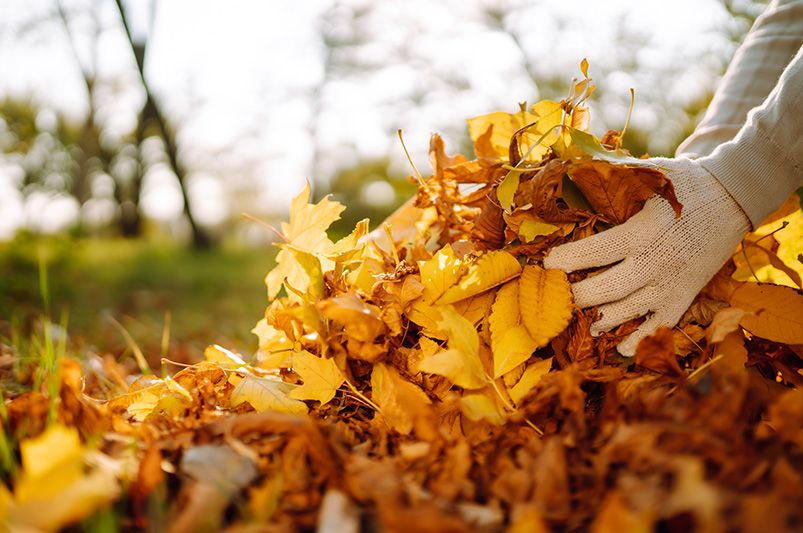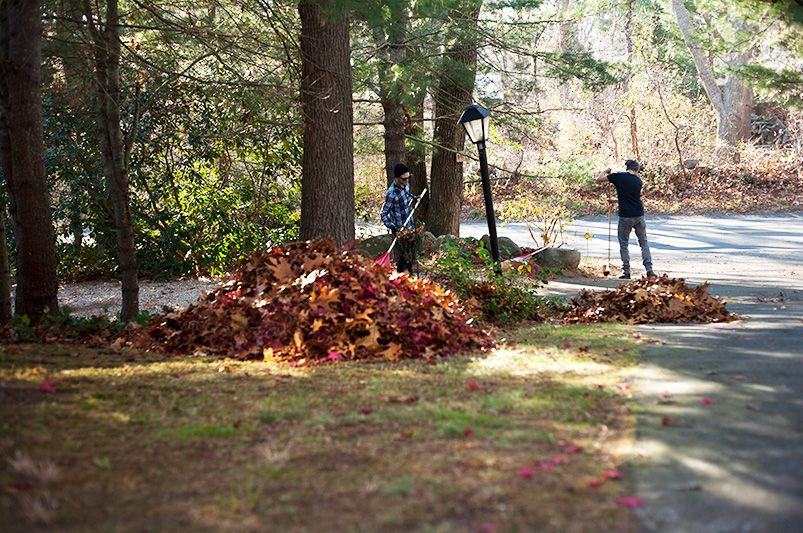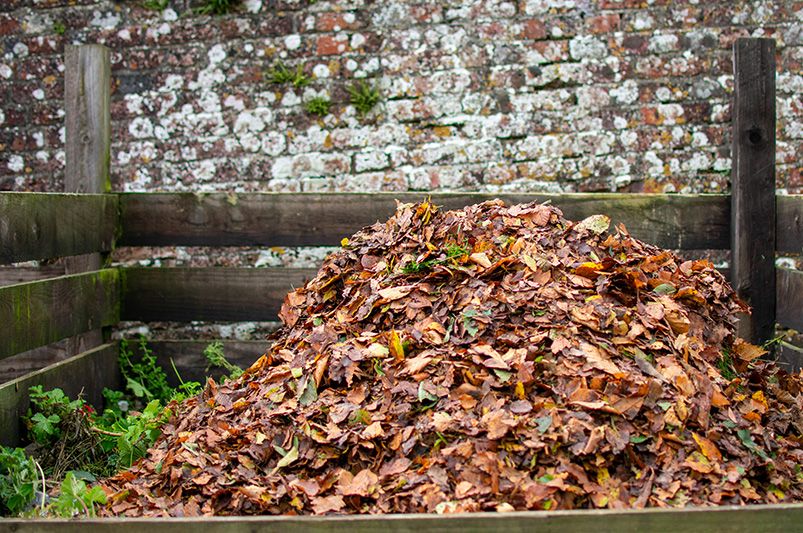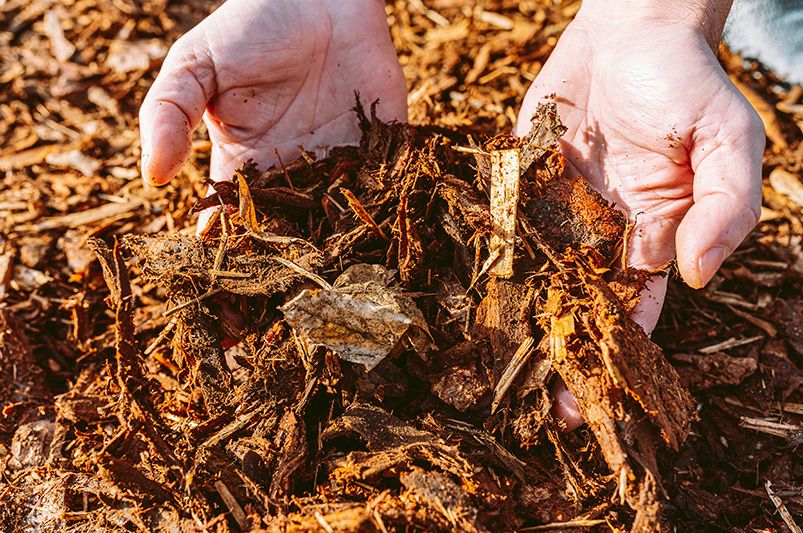
DIY Leaf Mulch: Turning Autumn Leaves Into Garden Gold
Published: 26/09/2025 | Updated: 18/12/2025
Autumn transforms neighborhoods into a canvas of orange, gold, and crimson leaves. While beautiful, those falling leaves often end up bagged, tossed, or burned — creating unnecessary waste. But what if you could turn that seasonal debris into a garden superpower?


That’s where DIY leaf mulch comes in. This simple practice transforms fallen leaves into nutrient-rich mulch that nurtures your soil, cuts down on maintenance, and supports eco-friendly garden practices. With the right approach, your fall cleanup becomes the foundation of a healthier, more sustainable garden year-round.
Why Use Leaf Mulch?
Leaf mulch is more than a quick fix — it’s a sustainable landscaping strategy that strengthens your garden’s ecosystem.
Key Benefits of Leaf Mulch
-
Nutrient Recycling: Autumn leaves are rich in nitrogen, phosphorus, and potassium — the same nutrients found in store-bought fertilizers.
-
Moisture Retention: Mulch reduces evaporation, conserving water and reducing the need for constant irrigation.
-
Weed Suppression: A 2–4 inch layer blocks sunlight, preventing weeds from stealing vital nutrients.
-
Soil Temperature Regulation: Insulates roots during cold months and keeps soil cooler in summer.
-
Pest Resistance: Properly managed mulch discourages certain pests while promoting beneficial soil organisms.
Example: In vegetable gardens, shredded leaf mulch can increase soil fertility so significantly that yields improve by as much as 30% compared to non-mulched beds.
By using leaves instead of buying mulch, you also save money while practicing eco-friendly garden practices that keep organic matter out of landfills.
How Leaf Mulch Works
Leaf mulch works through a natural process of organic soil enrichment.
When leaves are shredded and spread over your garden beds, they:
-
Slowly break down into humus (a nutrient-rich material).
-
Attract earthworms and beneficial microbes that aerate soil and boost fertility.
-
Improve water infiltration and prevent compaction.
This decomposition cycle mirrors the forest floor, where fallen leaves naturally recycle into healthy soil.

How to Make DIY Leaf Mulch
The beauty of DIY leaf mulch is that it’s free, easy, and sustainable.
Step 1: Gather Leaves
-
Rake leaves into piles.
-
Use a tarp to move large amounts.
-
Collect on dry days for easier handling.
Step 2: Shred the Leaves
Shredding is critical — it prevents matting and speeds decomposition.
-
Run over piles with a mulching lawn mower.
-
Use a leaf shredder for larger volumes.
Step 3: Apply as Mulch
-
Spread shredded leaves in a 2–4 inch layer across garden beds.
-
Keep mulch 2–3 inches away from plant stems and tree trunks to prevent rot.
-
Refresh the layer as it decomposes.

Advanced Leaf Mulching Techniques
Want to maximize the benefits? Try these advanced leaf mulching techniques:
-
Mix Materials for Balance
-
Blend leaves with grass clippings or compost to balance carbon and nitrogen, creating a more effective mulch.
-
-
Time Your Mulching
-
Late Autumn: Apply before winter to insulate roots.
-
Spring: Apply early for a nutrient boost before summer growth.
-
-
Match to Climate
-
In cooler regions, mulch protects plants from frost.
-
In warmer climates, mulch maintains soil moisture during hot spells.
-
-
Leaf Type Matters
-
Oak leaves break down slower — shred finely.
-
Maple and birch decompose quickly, ideal for rapid enrichment.
-
-
Layer Strategically
-
Use leaf mulch in combination with wood chips or straw for longer-lasting coverage.
-

Sustainable Landscaping with Leaf Mulch
By using leaves instead of sending them to landfills, you’re embracing sustainable landscaping practices that:
-
Reduce waste and greenhouse gas emissions.
-
Replace chemical fertilizers with natural nutrient cycles.
-
Enhance biodiversity by encouraging beneficial insects and soil organisms.
This practice transforms fall cleanup from a dreaded chore into a closed-loop system where every leaf is recycled into garden gold.
Conclusion: Garden Gold at Your Feet
Bagging leaves for disposal is like throwing away free fertilizer. With DIY leaf mulching, you:
-
Feed your soil with organic nutrients.
-
Reduce garden maintenance.
-
Support eco-friendly, sustainable landscaping.
-
Save money while enhancing your garden’s resilience.
Instead of seeing autumn leaves as waste, see them as the foundation of a healthier, greener, year-round garden.
Ready to transform your landscape into a sustainable sanctuary?
At ShrubHub, we design eco-friendly gardens that combine beauty with practicality. Whether you need expert advice, 3D design, or professional landscaping services, our team is here to help you bring your garden vision to life.
Start Your ShrubHub Landscape Design Today
Downloadable DIY Leaf Mulching Guide: Turning Autumn Leaves Into Garden Gold
Includes:
-
Step-by-step mulching instructions
-
Climate-based mulching tips
-
Mixing guide for balanced composting
-
Seasonal maintenance checklist
Download your free Leaf Mulching Guide and start enriching your soil naturally.
FAQs
-
What is leaf mulch and why is it beneficial?
Leaf mulch is shredded autumn leaves used as garden mulch. It conserves moisture, suppresses weeds, enriches soil, and supports sustainable gardening. -
Do I need to shred leaves before mulching?
Yes. Shredding prevents leaves from matting, which can block air and water from reaching the soil. -
When is the best time to apply leaf mulch?
Late autumn (before winter) and spring are ideal times to apply leaf mulch for seasonal protection and enrichment. -
Can I mix leaves with other materials?
Absolutely. Combining leaves with compost or grass clippings improves nutrient balance and speeds decomposition. -
Is leaf mulch safe for all plants?
Yes, but avoid piling mulch directly against stems or trunks to prevent rot.


